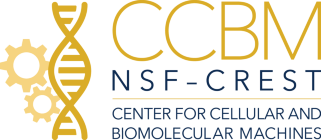
A doctor working alongside a robotic assistant would bring biotechnology visions into the real world.Credit: PopTika/Shutterstock
The University of California, Merced was barely a decade old when, in 2016, it won a $5 million award from the U.S. National Science Foundation to help create a new interdisciplinary research Center. The resulting hub is the Center for Cellular and Biomolecular Machines (CCBM), which is dedicated to exploring how biological matter comes together to perform specific tasks, and how that knowledge can be harnessed to design novel devices. CCBM co-director Victor Muñoz explains how the Center has established itself as a regional leader in scientific innovation and student training.
Why did you choose to join UC Merced?
Although I had a successful career studying protein biophysics at other institutions in the United States and Spain, I was attracted to the idea of building something from scratch here at UC Merced. In such a new institution, the pioneering spirit is integral to everything we do. But at the same time, it’s still a University of California campus, which means we have an in-built network for partnering with faculty at other nearby UCs, including in Berkeley, Davis, Santa Cruz and Santa Barbara. Altogether, it makes things very flexible, integrated and collaborative across UC Merced — and that approach carries over to the CCBM.

Victor Muñoz, co-director of the Center for Cellular and Biomolecular Machines at the University of California, Merced.Credit: University of California - Merced
What kind of research takes place at CCBM?
Our central focus is studying biological systems at the molecular and cellular level, and then thinking of these systems as machines, where components work together to produce function. Within this focus area, we have applied efforts in tissue engineering, biosensors and diagnostics, as well as basic research on subjects such as circadian rhythms, cell motility and biofilms. Our cutting-edge research has helped attract new faculty of the highest caliber and new research infrastructure to our young campus contributing to our status as the fastest-growing public university in the nation.
What training opportunities does CCBM provide?
The goal is to train the next generation of biotechnology researchers. That means training students not only in biology and chemistry, but also in physics, engineering, materials science and computational methods. The CCBM has created graduate courses and a multi-department graduate programme that is integrated into our interdisciplinary environment. Beyond graduate training, we also provide many research opportunities for undergraduate students, with funding available for them to gain research experience during the summers and regular semesters. Our outreach efforts also extend to local schools, with open-doors activities for the general public.
How does the CCBM promote the participation of underrepresented groups in scientific research?
It’s ingrained in everything we do and reflected in the diversity of the center leadership, faculty and students. Our student body is more than 50% Hispanic, and around two-thirds of undergraduates are first-generation college students. We actively recruit from this diverse population and have awarded 63% of graduate fellowships and 74% of undergraduate fellowships to those from underrepresented groups. Our research focused training contributes to UC Merced ranking #2 for UC campuses whose undergraduates pursue doctoral degrees following graduation.
How does the CCBM foster a culture of biomedical innovation?
We foster innovation at multiple levels through student fellowships focused on innovative and collaborative research as well as seed grants for high-risk, high-impact projects and entrepreneurial efforts. At the same time, we've been building opportunities here at UC Merced around technology transfer, patents and startups. We also have a new master’s programme designed specifically to prepare students for working in the biotech industry. Over the next five years, we hope to jump start some life sciences companies in this area.
How did the pandemic affect the kind of research happening at the CCBM?
COVID-19 refocused some of our research efforts quite a bit, and accelerated the move towards more applied technologies. For example, when the pandemic started, all the shortcomings of the current diagnostic technologies for detecting the novel coronavirus became evident, and I began thinking about ways to extend my work on biosensors to include diagnostics. This led to patents and to a project for a diagnostics startup. As another example, CCBM co-director, Ajay Gopinathan and colleagues with expertise in protein and membrane physics, have won a $1.8 million dollar consortium grant with other UC campuses to study the assembly of coronaviruses. So it’s been a fairly common experience for people to revamp their research during the pandemic, which has created a more entrepreneurial and innovative research culture.
Where do you plan to take the CCBM next?
The U.S. National Science Foundation recently renewed its funding of CCBM for another five years. In light of this, we’re planning an operational overhaul to better integrate everything we do. Originally, we organized along three research ‘thrusts’ — biomolecular machines, hybrid devices and cellular systems — with faculty divided into one of these three areas. Now, in this new phase, we’re going to connect these areas to facilitate more interdisciplinary research, as well as to move our focus to their adaptive responses. We are planning to transition the Center into an Organized Research Unit, a type of UC structure that would give us more permanence, more capacity, and the tools to bring in more funding for new projects including larger center grants.



